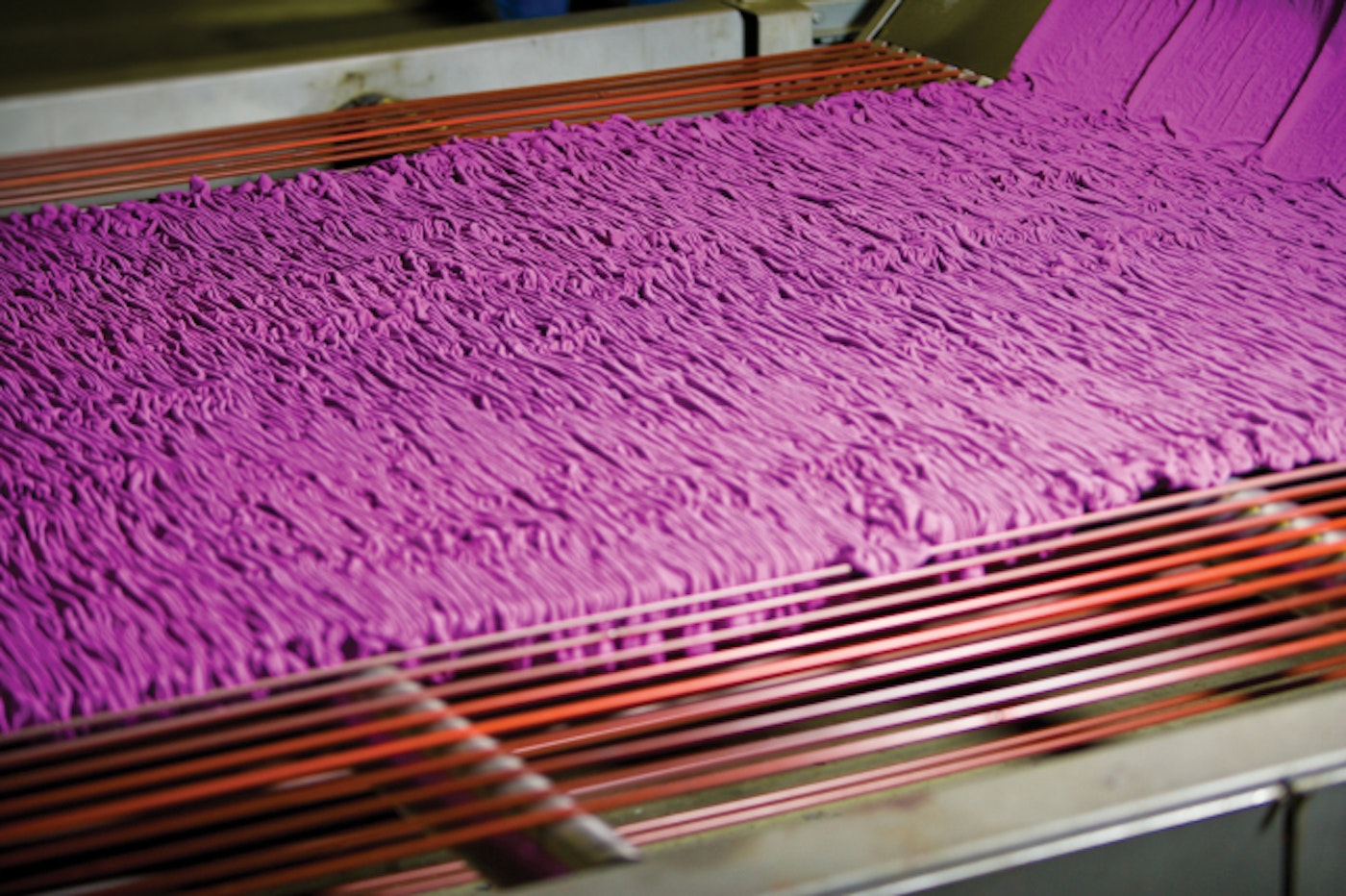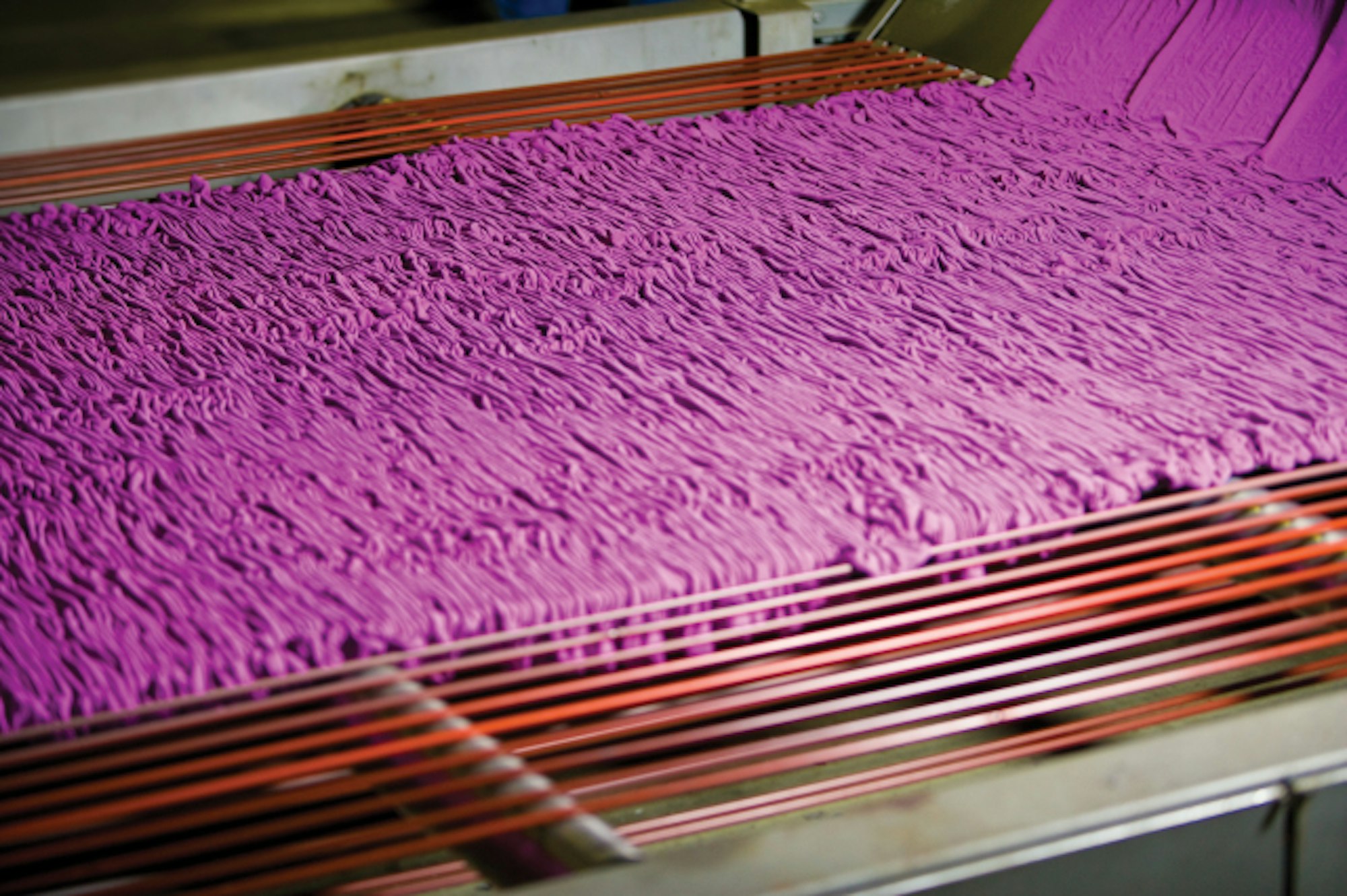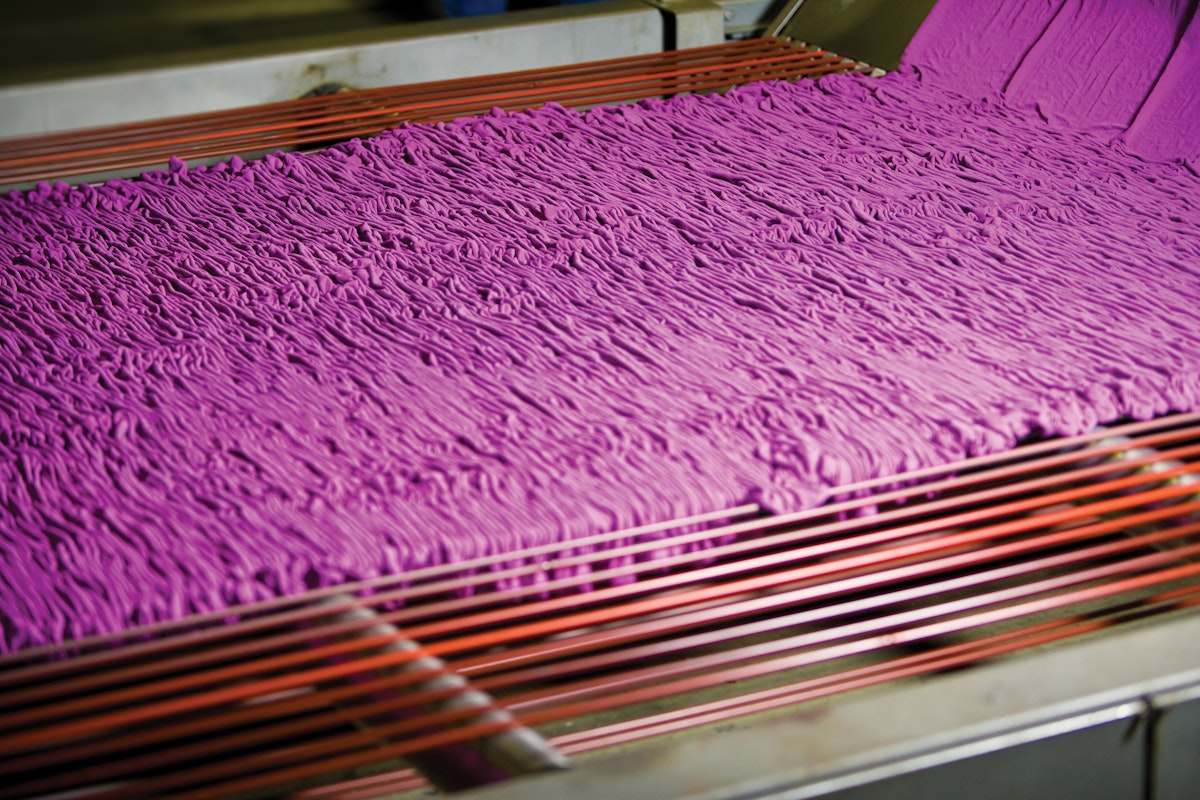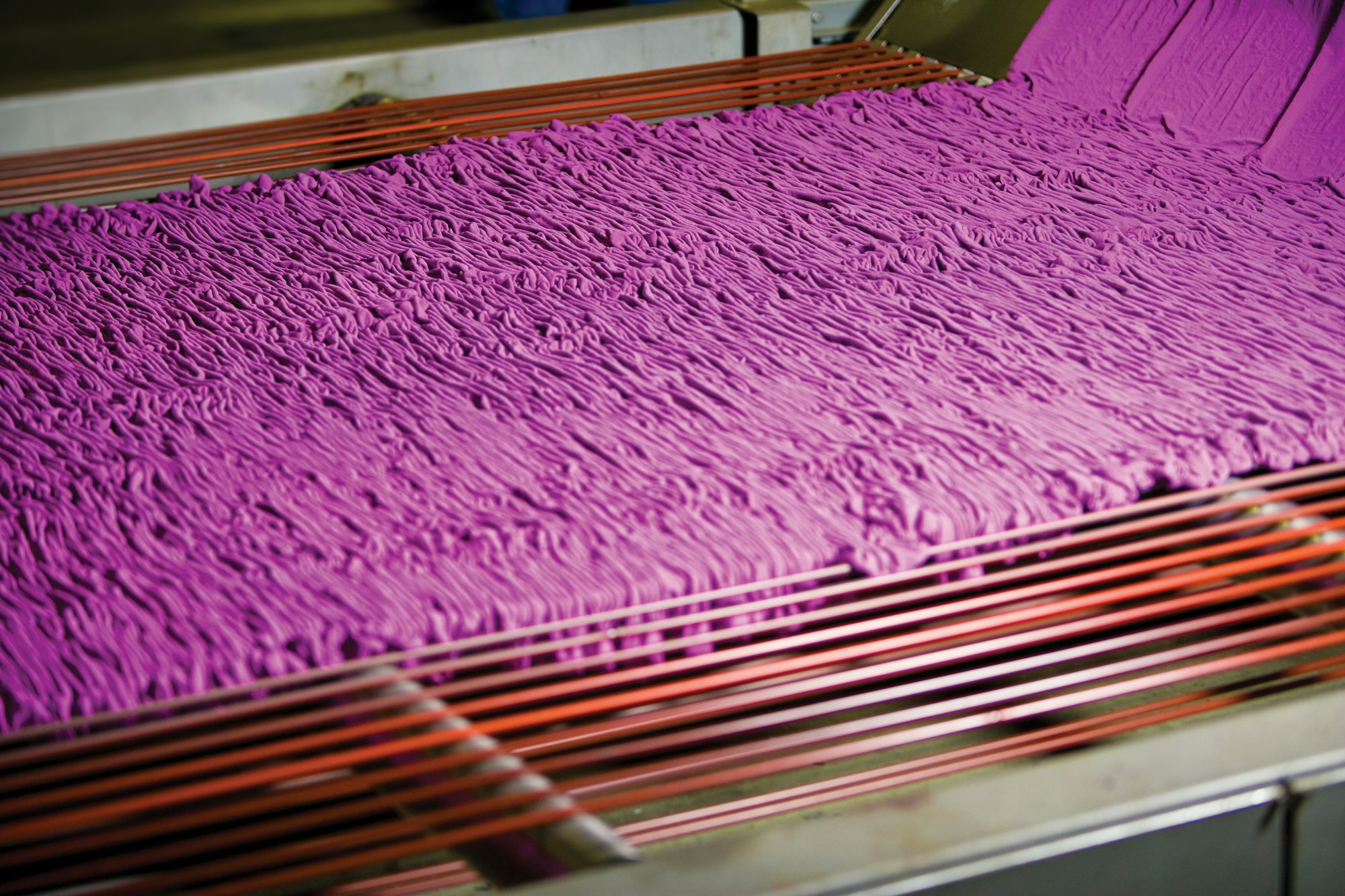Photos courtesy of Polartec
Imagine you’re picking out some layering pieces for the upcoming ski season. You find a few that look like solid options, and the tags on them all claim the same breathability and wicking performance, more or less. What if you were to dig deeper? Way deeper. What if you and a group of your friends decided to don different insulation pieces, jump in a pool and then walk them dry. That’s right, just walk and walk until the fabric was completely dry. Welcome to the next level of testing. The type of testing Polartec products go through to ensure they meet the needs of the most demanding consumers on the planet.


The consumers in this case were US military soldiers, with whom Polartec’s roots lie. Established in 1906 as Malden Mills, the company knit wool outfits for soldiers through the two world wars. In 1956, the headquarters moved to Lawrence, Massachusetts, and the operation continued to expand. Then, in 1981, the company created synthetic fleece and changed the game for active people everywhere. The fully synthetic material was a fraction of the weight of traditional wool products, with hydrophobic synthetic fibers that dried extremely quickly. It was named one of the 20th century’s greatest inventions by Time magazine and is now used in everything from jackets and pants to blankets and bed sheets.
Unfortunately the company took a stifling hit in 1995 when a massive fire burned Malden Mills to the ground and sent finances into a downward spiral. By 2007, it had gone through multiple bankruptcy filings when the assets were acquired by a group of investors who re-established the manufacturer under the Polartec name.
When the US military came to Polartec looking for an insulation that would keep the soldiers warm but not cause them to overheat, Alpha, a quick-drying and breathable insulation was created. It was put to the test, as mentioned, when soldiers were fully submerged and charged with walking it dry. Alpha outshined the competition in the test and was selected by soldiers as their insulation of choice.
This process is not uncommon for the company, either. Of the roughly 700 different products manufactured by Polartec, about a third of them are designed for a specific need presented by a partner or consumer. “A brand or a partner will come to us and say, ‘Hey, we have these customers that are looking to solve this problem,’” explains Doug Kelliher, VP of product development.
“They write us a brief, and we go and make what they need.”
From there, the technology can be applied to different end users. “This Alpha technology really got us thinking,” says Kelliher. “A lot of folks saw the need for having breathable, active insulation. So that’s a cool way we ideate with the military, and then it boils down into an overall need for the outdoor active market.”


“We make fabrics in our own factories, and that’s something unique,” says Kelliher. “If we have an idea from a development standpoint, we go to the knitting machine. We knit it. We do the processes to make a finished yarn, and then we test it. We can do all that here. We’re not just a brand name. We’re actually innovative textile knitters and finishers.”
One of the most recent advances for the company is a hybrid fabric dubbed Power Wool that combines pure merino wool against your skin with synthetic fibers on the exterior.
“What a lot of people do is blend those two to create a yarn that is then made into a fabric,” says Kelliher. “What we’ve done is kept the two separated so they each do what they’re best at.” This allows the wool to wick moisture away and push it to the synthetic fibers, which then dry very quickly. “It’s something that we’ll be first to market with, and it’s an exciting new platform for us.”
That exciting new platform is just one of many. Polartec is offering people in the ski world what Kelliher calls a “full solution.” It started with base layers and insulation, and now includes outer layers such as its patented NeoShell, which redefined breathability in the waterproof category when it debuted four years ago. Unlike some of Polartec’s other products, this wasn’t in response to a specific partner’s request but the market as a whole.
“A waterproof technology had certainly been asked for, and with our prowess in base layers and insulation, it made sense for us to get into the weather protection layer,” says Michael Cattanach, global product director for the company. “But we knew we wanted something special, not just another generic polyurethane film coating with only contentious lab testing showing its worthiness.”
Power Wool and NeoShell are prime examples of how Polartec continues to push the envelope, creating high performance products that today’s skiers need. Being ahead of the curve is a position that the company works hard to maintain and will continue to hold because as CEO Gary Smith says, “You can’t be a leader if you’re copying everybody else.”
Related: The Faction Collective is progressing the skier’s vision
Note: This article appears in FREESKIER magazine Volume 17.4, The Backcountry Issue. The issue is available via iTunes Newsstand. Subscribe to FREESKIER magazine.



![[GIVEAWAY] Win a Head-to-Toe Ski Setup from IFSA](https://www.datocms-assets.com/163516/1765920344-ifsa.jpg?w=200&h=200&fit=crop)


![[GIVEAWAY] Win a Legendary Ski Trip with Icelantic's Road to the Rocks](https://www.datocms-assets.com/163516/1765233064-r2r26_freeskier_leaderboard1.jpg?auto=format&w=400&h=300&fit=crop&crop=faces,entropy)




![[GIVEAWAY] Win a Head-to-Toe Ski Setup from IFSA](https://www.datocms-assets.com/163516/1765920344-ifsa.jpg?auto=format&w=400&h=300&fit=crop&crop=faces,entropy)


